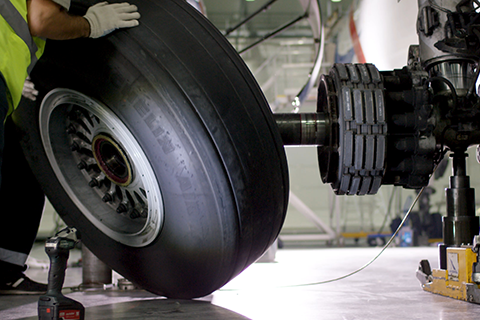S & T Aircraft is able to provide outright sales of aircraft accessories for vintage, radial and turbine engines. We attribute this to having one of the largest core banks of engine accessories in the world. Coupled along with our massive vendor network, we have strategically placed ourselves with the ability to obtain and deliver nearly any component imaginable. Our unique position allows us to provide our customers with the ability to purchase newly overhauled hard to find aircraft parts.
The term outright sales can be a little misleading due to the interchangeable terms used when people purchase components, engines, equipment or even complete aircraft. So we wanted to take a moment to define these terms and help clear up confusion for your next order.
AS REMOVED: Typically abbreviated as, AR, means that the part is sold in an “as is” condition when it was removed from the aircraft. There can be many reasons that a part would be sold in an “As Removed” condition, some of the reasons are for teardown purposes of the aircraft, malfunction of the unit, or the airplane was involved in an accident. We always recommend if you are going to purchase an as removed item, purchase the item from a reputable distributor so you don’t end up with a paper weight. Reputable distributors will typically allow you to return the item if the part is not repairable.
SERVICEABLE: A part that is labeled as a “Serviceable” unit can have several different abbreviations such as “SVC”, “RP” or “SV”. These acronyms are all the same and mean that the part is in a functional or repairable condition. The most important thing to note about serviceable parts is that the part is working or repairable. This means you have a guarantee that the part will work with little to not maintenance. Purchasing a serviceable unit typically costs much less than a new or overhauled unit because a serviceable unit will only need to go through a bench test to determine if the unit works. If the unit works it’s immediately installable, or if it doesn’t a simple repair can be performed.
NEW SURPLUS: A “New Surplus” part means that the part is brand new and never been used. Typically new surplus does not come with any traceability or documentation from the manufacturer, but it can come with a company certificate of conformance (ATA106). New surplus may also be abbreviated as “NS”.
NEW STOCK & NEW CONDITION: This terms is pretty straightforward in every industry. The part is brand new and has its OEM trace and certification (8130-3 if applicable) documentation. Some abbreviations used new condition are “NE” or “FN” (Factory New).
OVERHAULED: Overhauled units are different from serviceable. When a FAA Authorized 145 repair station overhauls a unit it means they part was disassembled, cleaned, inspected, repaired, reassembled and tested in accordance to approved maintenance data for that specific part. The repair station will typically replace all life limited components, rusted and damaged parts and any other parts necessary, along with performing cosmetic work such as stripping and repainting the unit to make it look new again. The repair station will issue a FAA Form 8130-3 stating that the unit was overhauled.
REPAIRED: Units that are repaired are very similar to overhauled units except that the repair station will only replace the parts necessary to make the unit functional again, and then perform a bench test. The repair station will also issue a FAA Form 8130-3 stating that the unit was repaired.
CORE: A core is a unit that has not gone through any sort of repairs and is the same as an “as removed” unit. The term core is used when conducting an exchange transaction. A repair station will sell you a unit to be exchanged with the unit that you will be removing from your aircraft.
OUTRIGHT SALE: In aviation, there are two types of sales. An outright sales or an exchange sale. In an outright sale, you are purchasing a unit without returning a core.
EXCHANGE SALE: In an exchange sale, the repair station will sell you an Overhauled unit in EXCHANGE for your CORE. This typically involves the same part number or in some cases the vendor may accept an alternate part number with prior approval, but very rarely.


